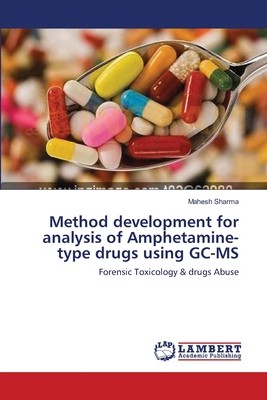
- We will send in 10–14 business days.
- Author: Mahesh Sharma
- Publisher: LAP Lambert Academic Publishing
- ISBN-10: 365945267X
- ISBN-13: 9783659452673
- Format: 15.2 x 22.9 x 0.7 cm, minkšti viršeliai
- Language: English
- SAVE -10% with code: EXTRA
Method development for analysis of Amphetamine-type drugs using GC-MS (e-book) (used book) | bookbook.eu
Reviews
Description
Forensic toxicology is the application of toxicology to the matter of law. This work is based on forensic drug testing field of forensic toxicology. Nowadays, the abusing of drugs is considered as a very intense problem which occurring in communities. More and more people are getting addicted to drugs and many are the drug dealers. The main purpose of the present study was the drug profiling and identification of eight Amphetamine-type stimulants (d-amphetamine sulphate, (+)-methamphetamine, Ibuprofen, Piperazine hexahydrate, 1-(4-methoxyphenyl) piperazine, 1-(4-trifluoromethylphenyl) piperazine, 1-Benzylpiperazine and 1-(2-methoxyphenyl) piperazine) by developing a GC-MS method which would detect all the above drugs at the same time. Quinoline was used as internal standard (IS) during the present GC-MS analysis. The first step was the individual drug analysis by the developed GC-MS method and the next step was the mixed drug analysis. The drugs were derivatised by the acylation reagent PFPA, however the silylation reagent BSTFA: TMCS (99:1) was also used as an alternative to acylation. The standard curve of each drug was plotted and the LOD & LOQ was calculated
EXTRA 10 % discount with code: EXTRA
The promotion ends in 23d.13:02:40
The discount code is valid when purchasing from 10 €. Discounts do not stack.
- Author: Mahesh Sharma
- Publisher: LAP Lambert Academic Publishing
- ISBN-10: 365945267X
- ISBN-13: 9783659452673
- Format: 15.2 x 22.9 x 0.7 cm, minkšti viršeliai
- Language: English English
Forensic toxicology is the application of toxicology to the matter of law. This work is based on forensic drug testing field of forensic toxicology. Nowadays, the abusing of drugs is considered as a very intense problem which occurring in communities. More and more people are getting addicted to drugs and many are the drug dealers. The main purpose of the present study was the drug profiling and identification of eight Amphetamine-type stimulants (d-amphetamine sulphate, (+)-methamphetamine, Ibuprofen, Piperazine hexahydrate, 1-(4-methoxyphenyl) piperazine, 1-(4-trifluoromethylphenyl) piperazine, 1-Benzylpiperazine and 1-(2-methoxyphenyl) piperazine) by developing a GC-MS method which would detect all the above drugs at the same time. Quinoline was used as internal standard (IS) during the present GC-MS analysis. The first step was the individual drug analysis by the developed GC-MS method and the next step was the mixed drug analysis. The drugs were derivatised by the acylation reagent PFPA, however the silylation reagent BSTFA: TMCS (99:1) was also used as an alternative to acylation. The standard curve of each drug was plotted and the LOD & LOQ was calculated


Reviews